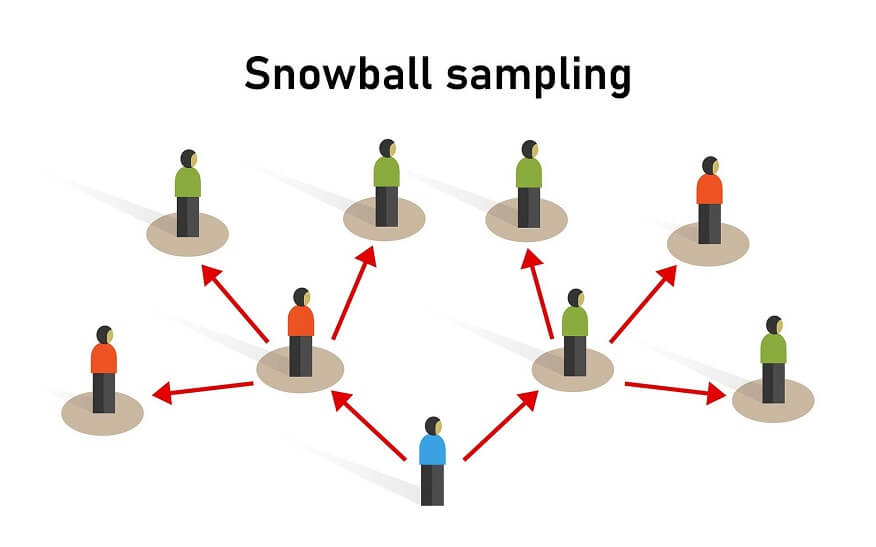
Even though you must ensure that your survey results reflect the entire population, it can be challenging to include everyone. Fortunately, non-probability sampling can be used to resolve the problem.
In a subset of sample selection known as non-probability sampling, individuals are chosen for study participation in non-random ways.
A Quick Overview Of Non-Probability Sampling
In contrast to probability sampling, non-probability sampling does not involve a random selection process; outcomes are unpredictable. Moreover, non-probability sampling cannot be used to make statistical inferences about the parameters of a population.
Generally, researchers prefer probability sampling methods over non-probabilistic sampling. However, there are times when constraints like time, money, and the study’s goals make a random selection method impractical in research. The practice of conducting a non-probabilistic sample is common in such situations. Furthermore, in some cases, such as anthropological research, it is not intended to estimate the results; hence, probability sampling is not required.
Non-probability sampling techniques can be either accidental or on purpose. Most sampling strategies aim to fulfill a particular purpose since researchers usually have a plan when addressing the problem of sampling.
Related: Everything You Need To Know About Subgroup Analysis
The Most Common Non-Probability Sampling Strategies
The following section describes the non-probability sampling typology in greater detail:
Quota Sampling
When using quota sampling, you choose a specified quantity or percentage of units, or “quota.” Your quota should consist of subgroups with specific characteristics (such as people, cases, or organizations). It is essential to select the subgroups carefully.
For example, suppose past research suggests that there might be differences between genders, age groups, and occupations. As a result, those will be your quotas, which you will fill out to ensure that your sample is representative.
Purposive Sampling/ Judgmental, Selective/Subjective Sampling
The phrase “purposeful sampling” refers to various sampling methods that select participants based on specific traits they possess. Because the units are chosen based on the researcher’s judgment, it is also known as judgemental sampling.
Choosing cases especially helpful to you, for example, for research on SEO marketing, selecting an SEO marketing expert who is known or readily available to you would be a good choice.
Deviant/Extreme Sampling
Here, the sample is chosen based on instances or participant traits that are rare or exceptional in some sense, such as egregious successes or significant failures.
The insights gained from enabling a group of non-traditional sample members to examine a subject will be distinct and unanticipated, making this useful for “thinking outside the box.” Getting in touch with these sample members will, of course, require more effort from you.
Maximum Variation Sampling/Heterogeneity Sampling
Without respect to the proportionate representation of the population, you should strive to represent the broadest possible range of viewpoints on the research’s intended subject here. Main objectives include:
- Produce the most comprehensive research results possible
- Investigate a subject from all angles
To accomplish this, you select your cases so that the key variable or characteristic varies as much as possible.
Homogeneous Sampling
Homogeneous sampling aims for as little variation in your sample as possible in contrast to heterogeneous sampling. Here, you select cases that aren’t too different from one another, yet you have your key variable or characteristic set.
Rather than attempting to see a subject from all possible sides, you concentrate on the research problem with a group of people who share your perspective before going into depth.
Expert Sampling
Expert sampling may prove helpful when research goals require a panel of specialists to help understand, discuss, and elicit valuable results. Such samples are selected using expert sampling based on the knowledge of prospective sample members.
Snowball Sampling/Chain Sampling
A snowball sampling method is used when it is hard to reach the sample population, or there is no information regarding the probable sampling unit.
For example, if you’re researching the unorganized spice trade and don’t have much information on the internet about the trade, you can use snowball sampling. Once you have found such a trader, you will ask him about other traders. Hence, you will be able to build a list of traders dealing in spice sequentially. As your sample size grows like a snowball, each of these cases provides the next sampling case; thus, it is called snowball sampling.

Self-Selection/Volunteer Sampling
The sample size is filled in by volunteers using the self-selection sampling procedure until it reaches the desired number.
As long as volunteers fit your desired criteria, they will sign up and choose to participate in the research, so you won’t need to spend as much time contacting them. The conclusions likely reached will be supported by the volunteers’ fervent beliefs. A good example is people who enroll in medical research studies because they meet the study’s eligibility requirements and do so for their own health.
Convenience Sampling/Accident Sampling/Haphazard Sampling
The convenience sampling method involves selecting individuals for a sample based on their convenience and availability.
This format is typically used in public places like malls and schools, where people can meet and choose based on their traits.
It is a quick and inexpensive approach to assemble a sample of people and conduct a survey to collect data. Due to its rapid nature, it is widely used in user surveys.
Also Read: An Introduction To Microsurveys
Skyrocket Your Returns
After reading this manual, you ought to better understand the various non-probability sampling strategies and how you might use them in your study.
How can you make sure your research yields the greatest return on investment? Analyzing customer and employee behavior and obtaining information is essential more than ever, given the speed at which they constantly evolve. For good survey results to be obtained, the sample must truly represent the population.
This is where SurveyPoint steps in to help. It helps researchers make better decisions by gathering actionable insights from respondents. Ensure that your survey receives accurate responses.
Sign Up to turn arbitrary decisions into data-driven actions Today!
Kultar Singh – Chief Executive Officer, Sambodhi




